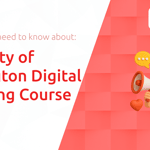
Stepping into the world of finance can feel like entering a foreign land where everyday conversations are peppered with unfamiliar words and acronyms. Yet, the power of financial language lies in its ability to guide decisions, protect assets, and unlock new opportunities. By decoding this specialized vocabulary, readers gain a deeper understanding of how money moves and how to make it work for them. understanding this jargon empowers readers to take control of their financial well-being.
Whether you are planning a budget at home, negotiating a business deal, or exploring investment strategies, the right terminology serves as a toolkit. It transforms vague concepts into precise actions, enabling individuals from all backgrounds to navigate complex transactions with confidence and clarity.
Financial literacy is more than just memorizing definitions. It is the ability to apply concepts to real-life scenarios, interpret the significance of numbers on a statement, and anticipate the consequences of decisions. Without a solid foundation, people risk falling into costly mistakes or missed opportunities that can derail long-term goals.
Imagine taking out a loan without fully grasping the interest calculation methods, or signing a contract without understanding the implications of collateral and liens. The result can be spiraling debt or unintended forfeiture of valuable assets. By embracing a basic glossary of terms, readers can avoid unexpected pitfalls and confidently engage with financial institutions.
To build a strong foundation, let us explore ten core terms that appear in everyday financial contexts. This table highlights each term, its definition, and a practical example to ground the concept in reality.
Once comfortable with basic terms, investors encounter new phrases and strategies. The following list highlights pivotal market concepts that guide portfolio decisions and risk management.
Understanding routine financial transactions can simplify daily life and protect against hidden costs. The following concepts shape how we interact with banks and credit unions.
With terms demystified, actionable frameworks help translate knowledge into practice. These guidelines offer simple proportions and practices for robust financial health.
The financial landscape evolves rapidly with digital innovations. From peer-to-peer lending platforms to e-wallets and cryptocurrencies, new offerings demand caution and curiosity. While these tools can enhance accessibility and convenience, they also introduce unfamiliar risks.
Before adopting a new product, it is essential to read terms, understand fee structures, and assess regulatory protections. A little research can prevent surprises such as hidden maintenance charges, volatile exchange rates, or insecure platforms.
Armed with foundational knowledge, readers can leverage jargon to their advantage. When budgeting, clear terms like "net income" and "cash flow" ensure accurate tracking of money in and out. In borrowing, understanding APR and collateral limits helps secure favorable loan terms.
Investors benefit from demystifying asset allocation and diversification principles, enabling customized portfolios aligned with personal risk tolerance and time horizons. Even business owners can negotiate better contracts by comprehending revenue recognition, operating expenses, and equity structures.
simple rules of thumb for budgeting simplify complex decisions into manageable steps. Over time, consistent application of these concepts builds habits that lead to long-term financial success and resilience.
Mastering finance jargon is not a one-time task but a continuous journey. As markets shift and new products emerge, readers who commit to ongoing education will maintain confidence and agility.
Resources such as government financial literacy sites, free online courses, and reputable blogs provide up-to-date glossaries and practical guides. Embrace a mindset of curiosity, revisit challenging topics, and never hesitate to seek professional advice when needed.
avoid common pitfalls and mistakes by staying informed and asking questions. With each term learned and concept applied, individuals take a step closer to confident and informed money decisions. Let this guide serve as the starting point for a transformative financial journey, underpinned by continued commitment to financial education.
References













